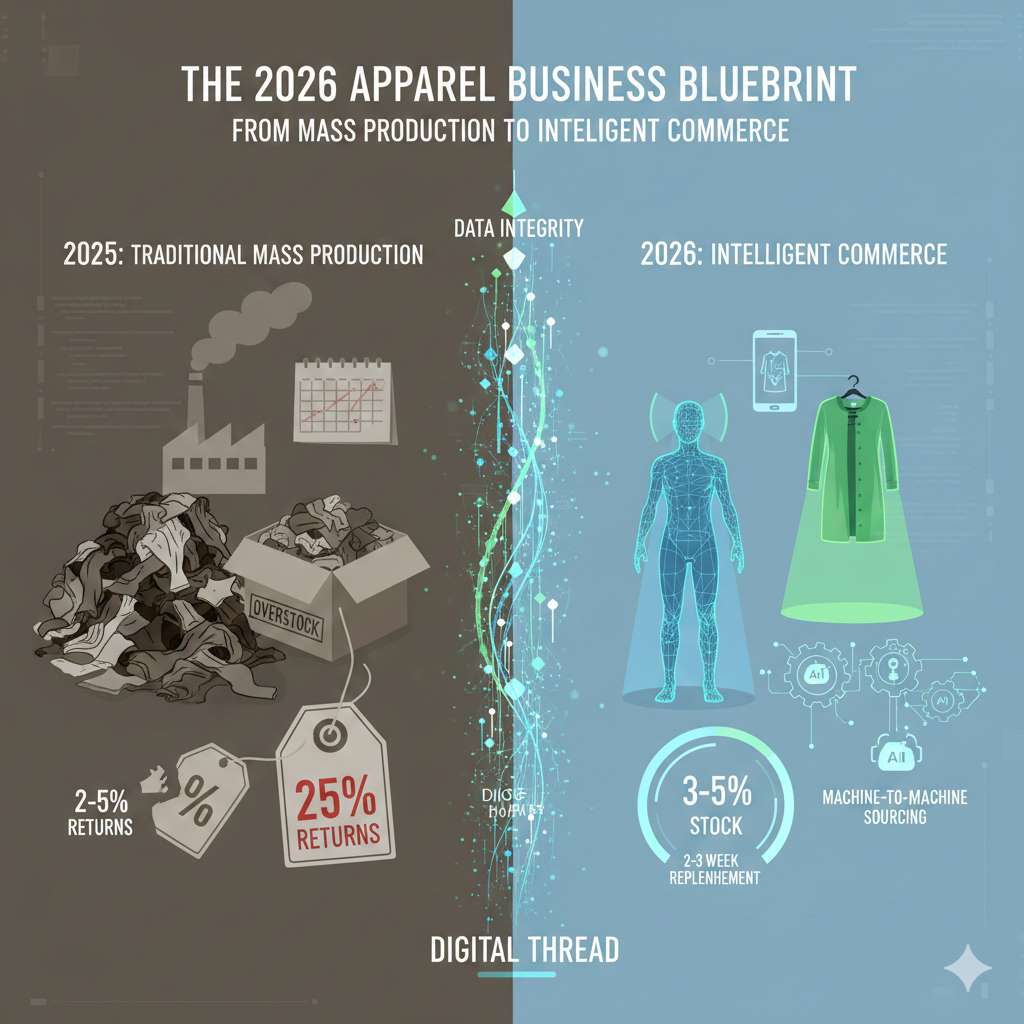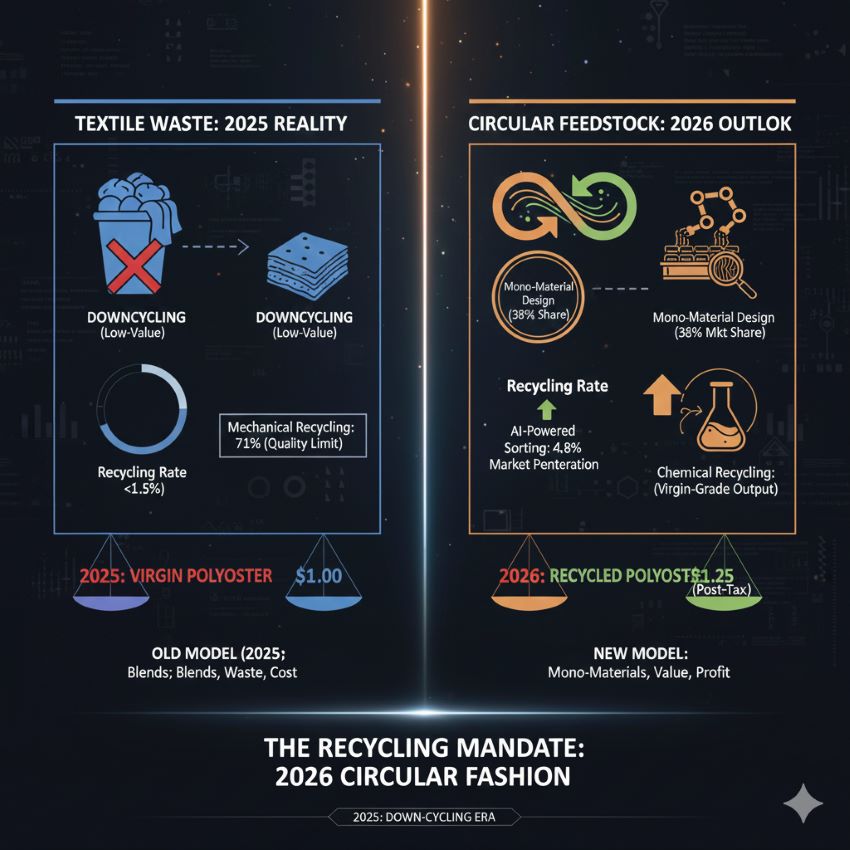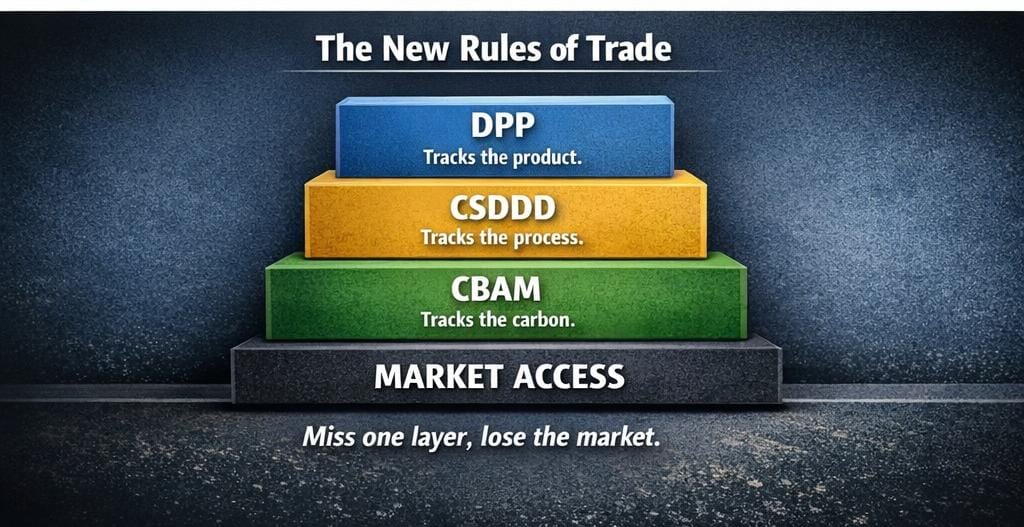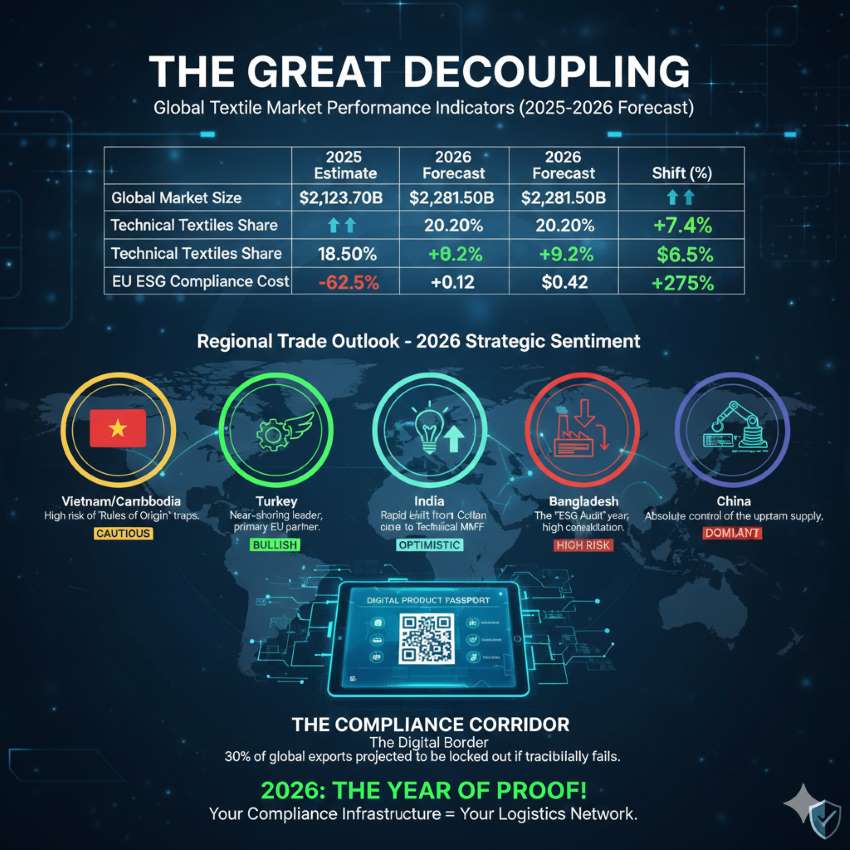FW
HimGra, an eco-friendly fiber innovation by Dev Ethical Sustainable Crafts and Textiles, Uttarakhand (DESCATUK), has been invited to present at Startup Mahakumbh 2025, India’s largest startup event, from April 3-5 at Pragati Maidan, New Delhi. Organized by FICCI and DPIIT, the event marks a major milestone for HimGra, a zero-cultivation carbon footprint fiber recognized for its sustainable impact.
Known for its patent-applied, waterless mechanical fiber extraction, HimGra has gained validation from IIT Mandi Catalyst, Fashion for Good, and global brands. It also won the Hindu Kush Himalaya Innovation Challenge for Entrepreneurship, further solidifying its credibility.
At Startup Mahakumbh 2025, HimGra will showcase its latest fiber, yarns, and luxury fabrics for apparel, home textiles, knits, and denim. The event will also mark the launch of its commercial cultivation, led by Self-Help Groups (SHGs) in Uttarakhand, promoting sustainable livelihoods and climate resilience.
“We are honored to be part of Startup Mahakumbh 2025. HimGra is more than an innovation it’s a movement for ethical, sustainable fashion. This platform will help us connect with industry leaders, investors, and policymakers to scale our impact and drive meaningful change in textiles,” said K D Sharma, Co-Founder and Director of DESCATUK.
With its presence at the event, HimGra aims to revolutionize the textile industry by advancing sustainable practices and empowering rural communities.
Europeans are buying and discarding more textiles than ever, says a new report by the European Environment Agency (EEA) highlighting the urgent need to shift away from fast fashion towards more sustainable practices.
As per this report, the average EU citizen increased their average textiles purchase from 17 kg in 2019 to 19 kg in 2022. This contributes to substantial environmental impacts, including increased material, water, and land use, greenhouse gas emissions, and chemical and microplastic pollution, the report says.
To mitigate these impacts, the EU's textile strategy promotes a circular economy, encouraging the production of durable, high-quality textiles that can be reused, repaired, and recycled. The EEA's Circularity Metrics Lab is tracking progress towards these goals.
The rise in online shopping, social media influence, and low-cost synthetic textile production has fueled the growth of fast fashion. While digital technologies like 3D printing offer potential for reducing waste, they also risk increasing consumption by lowering production costs.
Textile consumption ranks fifth among European household consumption categories in terms of environmental impact, measured by raw material use, greenhouse gas emissions, and water and land use.
In 2022, EU member states generated 6.94 million tons of textile waste, or 16 kg per person. Despite a slight increase in textile waste collection, 85 per cent of household textile waste ended up in mixed waste, contributing to landfill and incineration. The implementation of EU legislation for separate textile waste collection in 2025 is expected to improve capture rates.
Land filling of textile waste has decreased, while incineration has increased. Used textile exports have nearly tripled since 2000, reaching 1.4 million tons in 2023. Although intended for reuse or recycling, many exported textiles end up being burned or dumped in African and Asian countries.
The world’s first commercial-scale plant dedicated to producing loopamid®, a recycled polyamide 6 was launched by German chemical giant BASF in Shanghai, China. Having an annual capacity of 500 metric tons, this facility marks a significant step towards sustainable textile manufacturing.
Highlighting the plant’s role in addressing global challenges, Stephan Kothrade, CTO, BASF says, the plant not only transforms textile waste into valuable resources but also promotes a circular economy. It generates the entire loopamid from textile waste, catering to the growing demand for sustainable polyamide 6 fibers in the textile industry.
Ramkumar Dhruva, President –Monomers Division, BASF, says, commercialization of polyamide 6 facilitates textile-to-textile recycling in various fabric blends, including those with elastane. This fiber is expected to contribute significantly to circular economy in the textile sector besides helping customers achieve sustainability goals, he adds.
Both the new plant and loopamid products have received Global Recycled Standard (GRS) certification, assuring consumers and manufacturers of the recycled content and adherence to environmental and social standards.
Yarn manufacturers are already incorporating loopamid into their products.
The Shanghai facility currently utilizes industrial textile waste, such as cutting scraps and defective pieces, collected from textile manufacturing. BASF plans to progressively increase the use of post-consumer textile waste, like end-of-life garments. Recycling these materials is challenging due to mixed fibers, dyes, and accessories.
BASF is actively collaborating with partners to develop efficient collection and sorting systems for textile waste. They aim to expand the use of post-consumer waste in loopamid production, demonstrating a commitment to closing the textile loop and promoting sustainability.
Driven by an increasing demand, Australia's cotton lint market is projected to expand to 2.6 million tons by volume by 2035. As per a report by IndexBox, the market is expected to grow at a CAGR of +1.5 per cent from 2024-2035.
In terms of value, the market is forecasted to grow at a CAGR of +3.0 per cent, reaching $7.2 billion by 2035.
In 2024, Australia’s cotton lint consumption increased by 38 per cent to approximately 2.2 million tons. However, overall consumption showed a relatively flat trend, failing to regain the peak of 3 million tons recorded in 2022. Market revenue increased by 39 per cent Y-o-Y during the year to $5.2 billion.
Australia’s production of cotton lint expanded by 20 per cent to 3.5 million tons in 2024. This was valued at $8.6 billion in export prices. While production shows a general upward trend, it remained below the 2022 peak of $10.1 billion.
The area under cultivation of cotton lint contracted by 14.2 per cent to 657,000 hectare in 2024, following a peak of 766,000 hectare in 2023.
In 2024, cotton lint imports decreased by 22 per cent to 23 tons in 2024, after a peak of 80 tons in 2022. In value terms, imports reached $382,000 in 2024, despite a recent downturn.
Exports of cotton lint registered a slight decline of 0.9 per cent to 1.3 million tons in 2024, following a peak in 2023. In value terms, exports decreased to $2.7 billion. However, exports have generally shown a mild expansion, with a significant surge in 2021.
Vietnam remains the primary destination for Australian cotton lint exports, receiving 436,000 tons, or 39 per cent of total exports. Indonesia and India follow as significant export destinations.
The American Association of Textile Chemists and Colorists (AATCC) is set to return to the Functional Fabric Fair Portland in April 2025 with its immersive and educational Textile Test Zone. Following the success of its earlier iterations in 2024, this hands-on exhibition allows attendees to experience live demonstrations of textile testing and gain deeper insight into the science behind product development.
This year’s Textile Test Zone features six interactive stations: Color Acuity & Viewing Environment, Color Fastness, Laundering, Assessments After Laundering, Moisture Management & Water Resistance Testing, and Fiber Fragment Testing.
At the Color Acuity station, attendees can test visual precision using tools like the Farnsworth-Munsell 100 Hue Test and explore lighting effects on color with a Simultaneous Color Viewer. The Color Fastness section demonstrates fabric durability through friction and heat using Rotary Crockmeters and Scorch Testers.
The Laundering station showcases how size, shape, and color of fabrics are impacted by washing, highlighting AATCC’s eco-conscious test methods and detergents. Follow-up Assessments After Laundering focus on shrinkage, skew, and appearance using Shrinkage Scales and wrinkle evaluation tools.
Moisture Management & Water Resistance Testing lets visitors observe how textiles perform against water exposure with Spray and Impact Penetration Testers. Additionally, the Fiber Fragment section addresses microfiber pollution, showcasing AATCC TM212 an industry-first test method for measuring fiber release during laundering.
With a focus on sustainability, performance, and user experience, AATCC’s exhibit brings laboratory testing to life, helping attendees better understand the role of standards in textile innovation and consumer satisfaction.

Yarn Expo Spring 2025, held from 11 to 13 March at the National Exhibition and Convention Center (Shanghai), set a new benchmark with over 560 exhibitors from 13 countries and regions, and nearly 24,000 visitors from 123 countries and regions. Spanning 27,000 square meters in Hall 8.2, the fair highlighted the textile industry’s growing commitment to sustainability, featuring eco-friendly cotton yarns, recycled fibres, and a series of knowledge-driven fringe events.
Global industry engagement and sustainability drive
The latest edition reinforced its international appeal, attracting a diverse mix of exhibitors and visitors. There was a noticeable increase in participation from emerging sectors such as recycled and regenerated fibres, reflecting a shift towards a circular economy. Visitor numbers grew by 10.3 per cent, with significant attendance from Korea, Japan, Hong Kong, India, Taiwan, and Turkiye. The expo's seven specialized zones, including the International Zone, Chemical Fibre Zone, Cotton Yarn Zone, and Fancy Yarn Zone, showcased high-quality and organic cotton, bio-based yarns, and innovative materials derived from milk protein, mint, tea, hemp, and traditional Chinese herbs.
Speaking at the conclusion of the fair, Wilmet Shea, General Manager of Messe Frankfurt (HK) Ltd, emphasized the event’s role in promoting sustainability: “Yarn Expo Spring has demonstrated its international reach once again, attracting visitors from around the world to our vibrant zones. We have made a concerted effort to champion eco-consciousness within the textile industry, and through fantastic participation and a sustainable focus, this edition has helped position the sector for a greener future.”
Exhibitors showcase innovation and sustainable solutions
Exhibitors leveraged the event to highlight their latest innovations and sustainable products. Namita Nair, President (Yarn Exports) of Le Merite Exports Limited, India, noted the growing demand for responsible sourcing: “Our motto is to achieve the highest standard of customer satisfaction and retention. Yarn Expo provides an excellent platform to showcase our organic cotton yarn and greige fabrics, allowing us to connect with global buyers.”
PT Embee Plumbon Tekstil, Indonesia, showcased sustainable yarns, attracting buyers from Bangladesh, Brazil, and India. Sanjay Jain, Chief Marketing Advisor, praised the event’s reach, stating, “Shanghai is an ideal location to connect, and we believe the Chinese market remains vital for our growth due to its potential and innovative spirit.”
Other exhibitors, such as Fortune Tech Co Ltd from China, introduced specialized yarns like pleated yarn to target mid-to-high-end brands in Europe. Taiwan’s Tah Yao Textile Co Ltd highlighted the fair’s ability to bring together buyers from Europe, the Middle East, and the US, fostering international collaborations. First-time participant Primotex Textiles International Limited from Hong Kong showcased eco-friendly blended yarns with antibacterial and UV protection benefits, receiving an enthusiastic response from domestic and overseas buyers.
Buyers seek sustainable and high-quality yarns
Visitors to Yarn Expo Spring 2025 were keen to explore innovative and sustainable textile solutions. Duncan McKenzie, Senior Designer at Template Apparel, Canada, expressed excitement about the variety of offerings: “I am seeking cotton interlock and space-dyed yarns for our upcoming spring line that blends luxury with responsible production. Yarn Expo has been an overwhelming experience with many promising options.”
Pakistan’s Danyal Asif, General Manager of TDD Global, found the event fruitful, particularly in sourcing polyester yarns and recycled options: “It’s thrilling to see the show’s internationality, with exhibitors from Turkiye, India, and beyond.” Meanwhile, Ma Wenchao, Head of R&D at Dezhou Shangkai Tex Co Ltd, China, noted that the expo provided insights into the latest industry trends, influencing future innovations.
As one of China’s largest yarn exhibitions, Yarn Expo Spring 2025 successfully fostered new business opportunities and industry-wide discussions on sustainability. Organised by Messe Frankfurt (HK) Ltd and the Sub-Council of Textile Industry, CCPIT, the fair was held alongside Intertextile Shanghai Apparel Fabrics - Spring Edition, Intertextile Shanghai Home Textiles - Spring Edition, CHIC, and PH Value. This synergy amplified networking and business opportunities for exhibitors and buyers alike, solidifying the expo’s position as a premier global sourcing and knowledge-sharing platform.
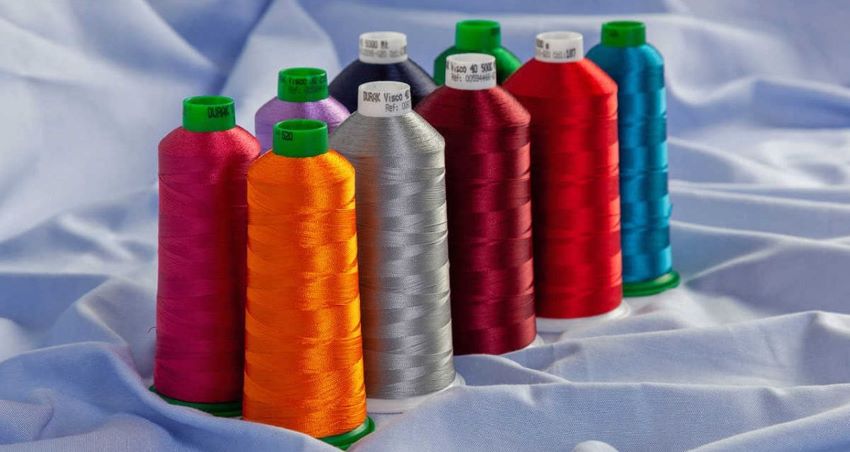
India, with its rich textile heritage and increasing environmental awareness, is ready to become a key player in the growing global lyocell fiber market. Lyocell, a sustainable fiber derived from wood pulp using an eco-friendly closed-loop process, is gaining traction as industries and consumers alike prioritize environmentally responsible choices.
India's growing lyocell footprint
While India's lyocell production is still in its early stages compared to global leaders, the country's consumption and future production potential are significant. India’s abundant raw materials, such as sustainable wood pulp, coupled with growing investments in advanced manufacturing technologies, create a conducive environment for increasing lyocell production.
The 'Make in India' initiative, aimed at boosting domestic manufacturing, is expected to further increase lyocell production capabilities. Several manufacturers are venturing into the lyocell market, with Birla Cellulose, a division of the Aditya Birla Group, standing out as a prominent player. The company's focus on innovation, exemplified by the development of Nullarbor-20™ (a lyocell blend with microbial cellulose), highlights India's commitment to cutting-edge sustainable textile technologies.
Consumption dynamics
India’s rapidly expanding apparel and home textiles sectors are primary drivers of lyocell consumption. The growing demand for sustainable fashion, particularly among urban consumers, has raied interest in lyocell-based products. According to Wazir Advisors study, the Indian textile and apparel market is expected to reach $350 billion by 2030, with a significant portion dedicated to sustainable and eco-friendly products. This underscores the vast potential market for lyocell fibers.
Beyond fashion, India’s healthcare and hygiene sectors are also adopting lyocell due to its biodegradable and skin-friendly properties. The increasing awareness of pollution caused by single-use products has further propelled demand for sustainable fibers in medical textiles and hygiene products.
Challenges to lyocell adoption
Despite its numerous advantages, lyocell faces challenges that hinder widespread adoption in India. High production costs remain a major hurdle, making it less competitive against conventional fibers such as cotton and polyester. Additionally, global competition from well-established lyocell producers and the need for a robust and sustainable raw material supply chain pose significant challenges.
India's path to becoming a lyocell powerhouse depends on strategic initiatives and industry collaboration. Government policies promoting sustainable textiles and circular economy practices are creating a favorable business environment. The increasing environmental awareness among consumers is also driving demand for eco-friendly products.
Investments in research and development will be crucial in improving production efficiency and cost-effectiveness, enabling India to compete globally. Moreover, the rapid growth of e-commerce platforms provides an expansive market for sustainable products, offering domestic manufacturers a gateway to both local and international consumers. With the right investments and policy support, India has the potential to emerge as a major exporter of lyocell-based products, reinforcing its status as a sustainable textile hub.
India’s textile industry is at the cusp of a transformative shift toward sustainability, with lyocell playing a pivotal role. While challenges persist, the country's rich resource base, technological advancements, and policy support create a promising landscape for lyocell production and consumption. As consumer preferences continue to evolve toward sustainability, India's ascent in the lyocell market could redefine its role in the global textile industry, positioning it as a leader in eco-friendly fashion and industrial applications.
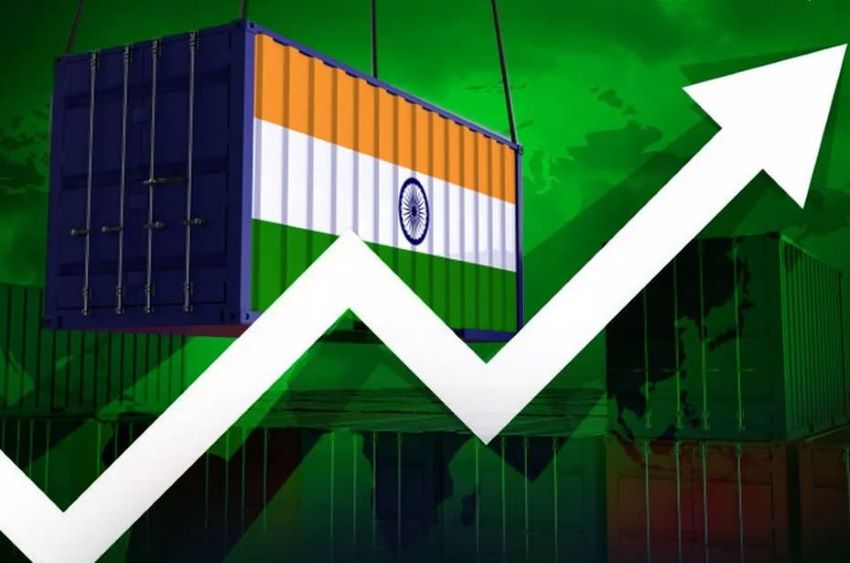
A number of catalysts life global shifts, favorable trade dynamics, and concerted domestic efforts is pushing India's textile and apparel sector towards an era of unprecedented export growth. But can India seize this moment and transform its textile legacy into a global powerhouse?
India's textile industry, a bedrock of its economy, is good growth. And what is boosting growth is its rich heritage and expansive manufacturing capabilities. In fact, India is positioned very well to increase its global textile footprint. Recent data underscores this positive momentum.
Table: India's textile export performance
|
Metric |
Value/Percentage |
Notes |
|
Textiles & Apparel Exports (Apr-Oct FY 2024-25) |
$21.35 billion (7% increase) |
Includes handicrafts; indicates robust growth momentum. |
|
Global Textile & Apparel Export Rank (2023) |
6th |
Demonstrates India's significant global presence. |
|
Global Textile & Apparel Trade Share (2023) |
3.90% |
Highlights India's growing influence in the global market. |
|
Textiles & Apparel Share in India's Total Exports (2023-24) |
8.21% |
Underscores the sector's vital contribution to India's overall export performance. |
|
Global Cotton Yarn Export Rank |
1st |
Reinforces India's dominance in the cotton yarn segment. |
|
Global Cotton Yarn Market Share |
31% |
Solidifies India's position as a leading global supplier. |
|
Global Textile Export Share |
5.5% ($19.73 billion) |
Represents India's strong performance in the broader textile category. |
|
Global Apparel Export Share |
3% ($15.5 billion) |
Indicates significant, though with room to grow, presence in the global apparel market. |
|
Increase in Cotton Imports (2024-25) |
62% + |
Reflects strategic sourcing to compensate for local production fluctuations. |
What led to the rise in exports…
Several converging factors are creating an unprecedented opportunity for India's textile exports. Geopolitical and trade dynamics is an important factor. For example, China's tariff on US cotton has drastically reduced US cotton prices, making it more accessible for Indian manufacturers, enhancing their cost competitiveness. Furthermore, it reduces the competitiveness of Chinese textile exports, opening market share for Indian goods.
US tariffs on Mexico too has given a competitive pricing advantage to Indian textiles in the US market. Meanwhile Bangladesh's political and economic uncertainties are prompting global buyers to diversify sourcing, favoring India as a stable alternative.
Another factor contributing to export growth is the strategic trade agreements. Like the India-Australia FTA that provides preferential access to high-quality Australian cotton, strengthening India's raw material supply. Similarly, the FTAs with EU & UK are expected to significantly boost exports by eliminating tariffs and enhancing market access.
India also has its own domestic strength with abundant raw materials. India's leading position in cotton and other natural fiber production provides a strong foundation. Its vast and skilled workforce gives it a significant advantage in labor-intensive textile manufacturing. Add to it government policies like the Production-linked incentive (PLI) schemes and infrastructure development projects that foster growth.
Product diversification is another plus. Expansion into man-made textiles and technical textiles is broadening India's export portfolio. Reliable cotton supply both from domestic sources and increased cotton imports, and FTA’s with cotton producing nations, ensure a constant supply of raw materials.
Despite the favorable outlook, India's textile industry must address critical challenges. Infrastructure bottlenecks for instance. Improving logistics and infrastructure is essential for efficient export operations. Investing in modern technology and automation too is crucial for enhancing productivity and competitiveness. Maintaining high quality and complying with environmental and social standards is also vital for market access. Navigating potential recessions and fluctuations in global demand is another challenge. Mitigating the impact of disruptions to global supply chains due to geopolitical tensions is important. And along with all this, remaining competitive amidst evolving global trade dynamics, including potential shifts in US cotton export strategies is also vital.

The European Recycling Industries' Confederation (EuRIC) has unveiled a the ‘EU Recyclers' Manifesto’ indicating a determined push to transform the European Union's textile recycling paradigm by the end of the decade. This initiative directly confronts the burgeoning textile waste crisis, advocating for systemic reforms to mitigate its profound environmental repercussions.
The alarming reality of textile waste
The manifesto sheds light on the current state of textile waste within the EU. Each year, EU citizens contribute approximately 16 kg of textile waste, a major figure that underscores the scale of the problem. Alarmingly, only a fraction, roughly 4.4 kg, is separately collected for reuse and recycling, leaving the vast majority to be discarded in landfills or incinerated. This unsustainable practice places immense strain on the environment, as the textile sector is a substantial consumer of vital resources like water, land, and raw materials.
EuRIC's multifaceted Approach
EuRIC's manifesto outlines a comprehensive strategy, advocating for the implementation of policy measures to foster a circular economy. These measures include the establishment of robust Extended Producer Responsibility (EPR) schemes, which would hold producers accountable for the entire lifecycle of their products.
Additionally, the manifesto calls for the introduction of ecodesign requirements to ensure that textiles are designed with durability and recyclability in mind. Digital Product Passports (DPP) are proposed to enhance transparency and empower consumers with greater product information. The establishment of clear EU End-of-Waste criteria is also deemed essential to provide standardized guidelines for recycled materials. Furthermore, the manifesto emphasizes the importance of fair-trade practices, balanced chemicals legislation, and stricter compliance monitoring to combat greenwashing.
Extending lifespans and boosting recycling rates
At the core of EuRIC's vision is a commitment to maximizing the circularity of textiles. This involves extending the lifespan of textile products, significantly increasing the use of recycled textile fibers in new products, and dramatically improving textile recycling rates. Currently, less than 1 per cent of clothing textiles are recycled into new garments, highlighting the urgent need for change.
Obstacles and action plans,
The textile collection and recycling sector faces a multitude of challenges. Rising sorting costs, declining demand for second-hand clothing, a lack of market demand for recycled textile content, and the proliferation of ultra-fast fashion are all contributing to the current crisis. To address these challenges, EuRIC proposes a multi-pronged action plan that includes the implementation of robust policy measures at the EU level, fostering industry innovation and investment in circularity, and enhancing consumer awareness.
However, the manifesto has elicited varied reactions from industry stakeholders. Some, particularly within the recycling sector, have expressed strong support. "The manifesto provides a much-needed framework to address the systemic issues plaguing the textile recycling industry," stated a representative from a leading European recycling firm, as reported by Waste Dive magazine. "The call for EPR schemes and ecodesign requirements is essential to driving meaningful change."
Conversely, some segments of the fast-fashion industry have voiced concerns about the potential impact of stricter regulations on their business models. "While we acknowledge the need for greater sustainability, the proposed measures could significantly increase costs and hinder innovation," argued a spokesperson from a major clothing retailer, as quoted in a report by Reuters. "A more balanced approach is needed to ensure both environmental protection and economic viability."
Experts in sustainable fashion also weighed in. "EuRIC's proposals align with the principles of a circular economy, but the success of these initiatives will depend on effective enforcement and collaboration across the value chain," stated Anna Ferraro, a sustainability researcher at the European Environmental Agency, during an interview with Euractiv. "Consumer education and behavioral change are also crucial components."
Tailoring solutions for national contexts
While the manifesto provides a unified framework for the EU, its implementation will necessitate tailored approaches at the national level. Factors such as existing waste management infrastructure, consumer behavior and awareness, the presence of textile manufacturing and retail industries, and national regulations will all influence the specific actions taken by individual countries.
EuRIC's Call to Action
"By creating an environment where innovation thrives and circularity is rewarded, EuRIC aims to reduce the textile sector's environmental impact, boost textile circularity in Europe, and create new economic opportunities for reuse and recycling operators. Our Textiles Manifesto outlines the steps to achieve this," says Mariska Boer, President of EuRIC's Textiles Branch, emphasizing the organization's commitment to driving meaningful change.
EuRIC's ‘EU Recyclers' Manifesto’ represents a crucial step towards a more sustainable textile industry in Europe. By advocating comprehensive policy measures, fostering industry collaboration, and engaging consumers, the manifesto provides a roadmap for achieving a truly circular textile economy.
A Niti Aayog report highlights, India’s textile sector needs significant reforms to maintain global competitiveness. Titled, ‘Trade Watch July-September (Q2) FY25,’ the report emphasizes the sector's importance to India's industrial output, employment, and exports, which reached $34.2 billion in 2023.
Despite accounting for 5 per cent of India's total exports, the textile industry's global trade share remains a modest 4 per cent, ranking India sixth worldwide. While India excels in natural fiber-based textiles like cotton and carpets, it lags in apparel and technical textiles, where countries like Bangladesh and Vietnam are more dominant, the report points out.
India's presence in man-made textiles is moderate, and it trails in high-value technical textiles, a sector led by China, Germany, and South Korea, the report further shows. The Indian textile market needs to improve its supply chain integration, cost-efficiency, and adherence to sustainability standards to remain competitive in the global textile market, the report.
Furthermore, India's textile exports registered a slight decline in FY24 to t $35.94 billion, while competitors like Bangladesh and Vietnam achieved approximately $44 billion. Over the past six years, India's T&A exports have grown by only 0.8 per cent annually, well below the global rate of 3.5 per cent.
The report notes, India’s textile industry lacks product diversification, with over half of the textile exports relying on just 134 items. It also stresses India's dependence on China for synthetic fiber and technical textile raw materials.
Additionally, the report acknowledges the impact of changing geopolitical dynamics, particularly the US-China trade shifts, which create both challenges and opportunities for India. To capitalize on these shifts, India must enhance its ‘ease of doing business,’ improve trade infrastructure, and align with international regulatory standards.

